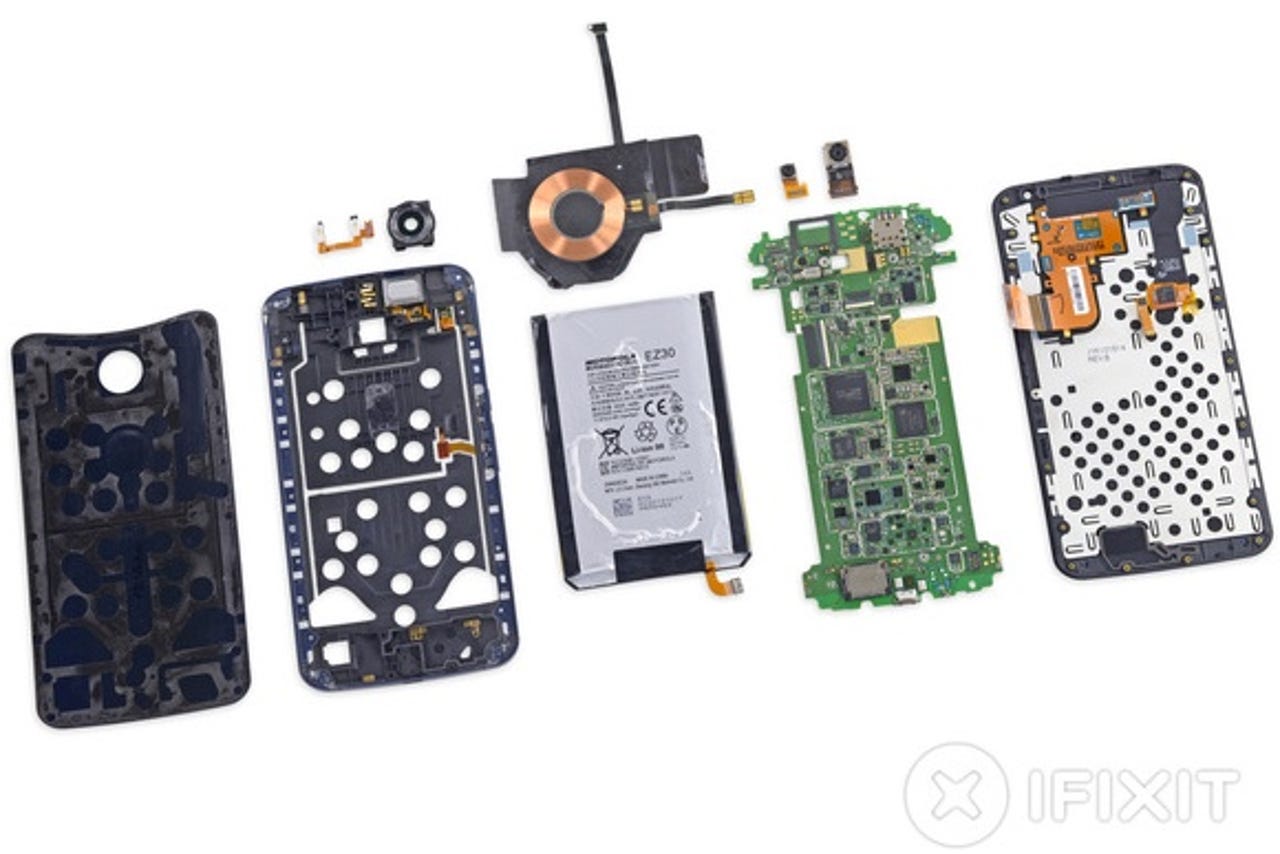Inside the Nexus 6


Large smartphones are now in, and with Apple having released the 5.5-inch iPhone 6 Plus, Google has chosen to trump that with a 5.96-inch Nexus 6. So, aside from having a bigger screen, how does the Nexus 6 stack up against the iPhone 6 Plus?
A teardown carried out by repair firm iFixit revealed the Nexus 6 to be "a solidly built phone, with high-end specs but not a lot of flashy new tech."
After tackling some mild adhesive holding the back cover, and a total of 22 T3 Torx screws, the team was able to get inside the device to see what made it tick. And it seems that Qualcomm is a big winner, scoring a number of prominent wins.
- Qualcomm Snapdragon 805 SoC
- SK Hynix H9CKNNNDBTMTAR 24 Gb (3 GB) LPDDR3 RAM
- Qualcomm PMA8084 power management integrated circuit
- SanDisk SDIN9DW4-32G 32 GB eMMC NAND flash
- Qualcomm MDM9625M LTE modem
- Qualcomm WTR1625L RF transceiver
- Qualcomm WFR1620 receive-only companion chip
- Texas Instruments TMS320C55 digital signal processor
- RF Micro Devices RF7389EU F14NRC2 envelope tracking integrated circuit
- Broadcom BCM4356 802.11ac + Bluetooth 4.1 IC
- Atmel MXT640T CCU 1424D TW QLR64 touchscreen controller
- Dialogue iW1760B power supply controller
Powering this is a 3.8 V, 3220 mAh (12.2 Wh) battery – bigger than the 11.1 Wh unit found in the iPhone 6 Plus – but this doesn't seem to offer additional battery life. And to facilitate wireless charging there's a inductive charging coil.
When it comes to repairability, it's a mixed bag. The use of pressure contacts and cable connectors on the cameras, button and headphone jack make them easy to repair, and the use of screws – although a failrly uncommon one – rather than adhesive makes opening it easier. However, the glued-in battery s less than ideal, and some components such as the vibrator, SIM slot, speaker and USB port are soldered directly to the motherboard. Also, the digitizer is glued to the display, making the repair of a cracked screen pricy.
See also: